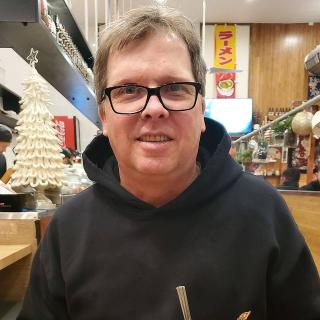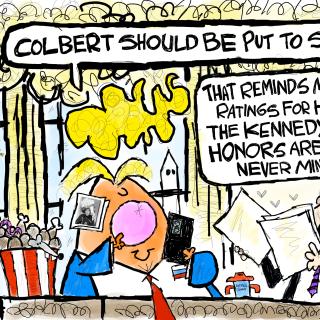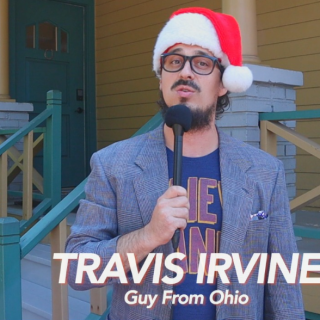Welcome to Riotsville – a fictional town built by the U.S. military. Using footage shot by the media and the government, the film explores the militarization of the police and the reaction of a nation to the uprisings of the late '60s, creating a counter-narrative to a critical moment in the country's history.
Riotsville, USA, a point in American history when the nation’s rulers, politicians, bureaucrats, and police were faced with the mounting militancy of the late 1960s, and did everything possible to win the war in the streets. Using training footage of Army-built model towns called “Riotsville” where military and police were trained to respond to civil disorder, in addition to nationally broadcast news media, the documentary connects the stagecraft of law and order to the real violence of state practice. Recovering an obscured history whose effects have shaped the present in ways both insidious and explosive, "Riotsville, USA" is a poetic reflection on the rebellions of the 1960s, and the machine that worked to destroy them.
After the destructive rebellions in U.S. cities in 1967, almost always spurred by incidents of police brutality, President Lyndon Johnson convened the Kerner Commission that recommended spending billions to improve housing, education and employment prospects for African Americans. The Harvest of American Racism, written by the Kerner Commission, provides a political context, identifying the riots as instead being rebellions, and links them to global anti-colonial struggles. Tasked to answer three questions about the rebellions of 1967: What happened? Why did it happen? What can be done to prevent it from happening again and again?
Johnson balked at those expensive solutions, but he adopted the commission’s suggestions for riot preparedness with alacrity. Our contemporary situation, police and soldiers outfitted with seemingly endless supplies of tear gas grenades confronting a perpetually underemployed class of young people, is the legacy. Something like Riotsville takes all these complicated social questions and turns it into a matter of crowd control.
There’s a military training film in "Riotsville, USA" that shows the different ways the Army is instructing their soldiers to handle white protestors versus what they term hardcore professional agitators, who are of course Black. What's ironic is that much of this training is evolving in conjunction with the Kerner Commission that was commissioned to explore all these complicated social questions. The Public Broadcast Laboratory (PBL) clips show the very reasoned debates and policy demands that underlie the riots that erupted in the late ‘60s, the root issues that were even recognized by the Kerner commission. Led by a group of mostly white political moderates, it reaches a fairly radical and unexpected conclusion, the cause of the rioting is inequality caused by white racism. It's an official acknowledgement, in stark terms, of a deeply unequal society and a clarion call for transformative and costly social policy initiatives to begin to reverse course. But in the end, few of the Commission’s prescriptions were enacted. And, ultimately, they called for an upgrade in policing, and massive amounts of federal funding for military riot-training programs were made available. It’s linked to the beginning of the professionalization, and thus funding, of the police. Figuring out how to balance, on one hand, the promise of what the Kerner Commission concluded and on the other, the real, huge limitations of that kind of liberal, mostly white, top-down program with many serious flaws.
White society is deeply implicated in the ghetto. White institutions created it, white institutions maintain it, and white society condones it. The film denies any conspiracy at work in the 'riots'; instead identifies predatory policing practices, discriminatory housing, employment, education, and biased media coverage. It calls for unprecedented levels of funding into anti-poverty programs for disadvantaged and segregated communities. On April 11, 1968 the Civil Rights Act of 1968 was signed, that Included the Fair Housing Act, which does not require any federal funding, and the Anti-Riot Act, which made it a felony to travel in interstate commerce, with the intent to incite, promote, encourage, participate in and carry on a riot.
How do you situate Riotsville within the legacy of 1968, reconciling living memory and mythology? How do you situate it within the life of the communities most affected by the state violence the performances at Riotsville are illustrating, and within the activism organizing to oppose it? And crucially, how do you situate it within a nation founded on white supremacism, determined to launch a war against its Black citizens, on a loop for hundreds of years? These questions shape of the film; a mapping of structural forces that could not seem more urgent in 2022, with all the violence and possibility it contains.
This documentary is about the law and order craze over the course of 1968, and all of these examples of local law enforcement reaction, including the fact that the Army built towns on military bases that they named Riotsville, USA, where they did large-scale theatrical reenactments of civil unrest. As the civil rights movement thickened into the militancy of Black Power, the destruction of property and mass clashes with police, would be a routine feature of a society riven by racial hatred and that refused to feed it's poor.
The task was not to disavow the smashing clarity in the street but to build forms of collectivity that could outlast the days of rage. There was power in a riot, in its rippling, adaptable passions , power that might even express itself, at some point, by winning seats on city councils. A lot of revolutionary images are central to our collective memory of 1968. It’s a very official story of revolution and how it gets subsumed back into order. The film explores how a national consciousness is formed. These institutions were dictating policy and trying to shape opinion on a massive scale and wielding incredible financial and cultural influence on the formation of the carceral state. It's an uncanny world that resembles our own but isn’t.
This goes back to a long history of image-making, where images of riots have been traditionally instrumentalized to justify the way that Black communities are policed. How photography tends to emphasize these moments of explosion and rupture, but it really fails at capturing the long, structural questions that lead up to moments of crisis.
The '60s created this image of riots as being a fundamentally Black phenomenon, when factually, most riots in this country have been white vigilantes, many times playing out violence against Black citizens, which is something that we've very much seen in last few years as well, of course. The film wants to underline the fact that this massive militarization of the police as a reaction to Black riots is not incidental. To be able to show the military recreating and rehearsing something and then see it play out in real time shifts the narrative. Instead of the police and military responding to an outbreak of violence, it’s presented as an attack on civilians by the police backed by a massive explosion of money and interest towards repressing Black rebellion. The goal of waiting until the final moments of the film for there to be images of Black people rebelling against their circumstances is to fully equip the audience to be able to look at that footage in a different way. It's about the colonized dream of strength, of running, jumping, and flying. And the footage of the rebellion in Liberty City, Miami should be viewed in that way.
What are we looking at? During these last many difficult, upending, dark, and often revelatory years in the United States, that question has persisted in our mind. How can we locate and trace structural power and white supremacism within the archives. The goal is to re-present historical material that forces us to contend with our past, reflect upon our present, and interrogate the unique ways that moving images can transmit history in this country. It's a hard one to intellectualize, but it feels like an emotional necessity to have a structural break to mark the scale of the loss of Rev. Martin Luther King Jr. To look and listen and feel, for an extended period of time. Some moments are larger than others, and the weight of that moment should be reflected in the time-space of the film. The public television media provides a broader perspective on the narrative of civil unrest vs law and order. 1968 seems both pretty modern and also very far away.
We take the world we live in as an inevitability. What's really empowering, it's all constructed and, thus, can be deconstructed. If an oppressive system like the one we see today can be constructed, something like our dream of a humane Harlem can too. Maybe this film helps us see what we need to overcome to get there.
Opens on September 30 at Gateway Film Center
https://gatewayfilmcenter.org/movies/riotsville-u-s-a-2022/
Opens on October 6 at Cleveland Cinémathèque
https://m.cia.edu/cinematheque/film-schedule/2022/10/riotsville-usa






